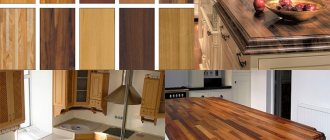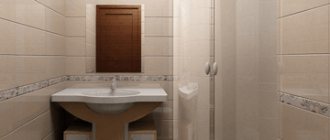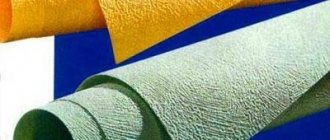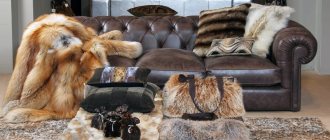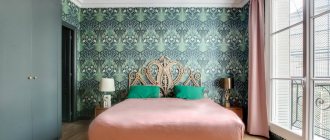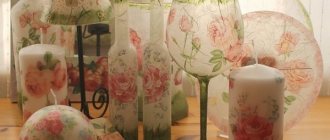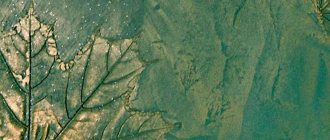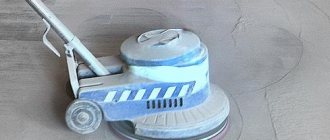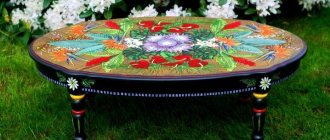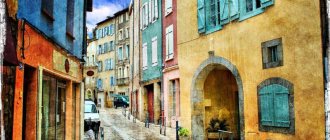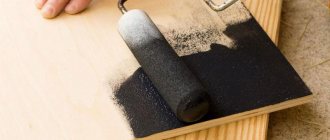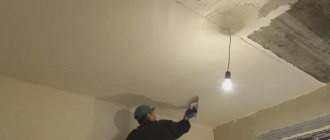What varnishes are used to impregnate plywood
Plywood is a wood-based material characterized by a multi-layer structure, which makes it resistant to deformation. Strongly glued sheets with a longitudinal-transverse arrangement of fibers have a characteristic texture inherent in a cut of natural wood. When painted with varnish, plywood acquires a new level of strength and the natural color of the wood improves.
The dense polymer layer is somewhat reminiscent of a laminate, protecting the wood cladding from mechanical damage. It is not easy for beginners to figure out when a high-quality water-based impregnation is needed, and where an oily suspension is preferable. Often you have a difficult choice - to buy a can of facade varnish or an analogue for interior work.
Before varnishing plywood, it is important to have an understanding of the curing process:
- Polymerization is inherent in multicomponent gel-like mixtures, where some of the chemicals evaporate upon drying, forming a reliable protective film. This niche includes polyester and formaldehyde, alkyd and polyurethane compositions, which dry completely in 30-70 hours.
- Drying, evaporation or volatilization of the base is typical for mixtures that are simpler in composition. These are nitrocellulose varnish and alcohol mixtures.
Waterproof and moisture-resistant varnishes undergo a polymerization process, forming an impenetrable hard layer. After this treatment, plywood is used on the floor or walls of rooms with high humidity.
Important requirements for working with paint and varnish mixtures
Transparent compositions after hardening give a pleasant yellowish or brownish tint. When there is a desire to enhance the color of wood sheets, they are first coated with stain of the required shade.
Any paint and varnish composition is a chemical mixture. And before varnishing plywood sheets, it is necessary to protect the eyes, exposed skin and respiratory tract from fumes. Specialists who work with dyes and impregnations wear work uniforms and gloves, a respirator and special glasses.
If varnish or solvent gets on exposed areas of the body, immediately wash them with running water.
If there is redness (other signs, chemical burns or irritation), it is important to see a doctor the same day
What composition to choose for plywood
Plywood is a pliable material; any type of varnish is well distributed on its surface:
- Nitrovarnishes and nitrocellulose compounds are the best waterproof base without a yellowish tint; they dry quickly, but have a strong toxic odor.
- Alcohol-based paints and varnishes suitable for polishing are produced.
- Acrylic varnish for plywood is resistant to temperature changes, so it is used to treat surfaces adjacent to the heating system.
- Transparent oil mixtures interact well with coatings based on environmentally friendly resins and dyes; they are suitable for impregnating plywood and floors in children's rooms, but take a long time to dry.
- The polyester composition dries quickly, leaving a glossy surface (with a mirror effect).
- Varnish based on epoxy resin gives a characteristic amber tint; a special hardener is added to it; the proportion is indicated on the packaging; it is suitable only for interior work.
- Polyurethane is known for its wear resistance and has a short polymerization period (up to 10-12 hours). Mixtures based on it are classified as waterproof varnishes for processing plywood. Wood with such impregnation is used in places with the greatest load.
- Water-soluble bases require evaporation, along with acrylates, and are considered the safest formulations to use.
The conditions under which a varnished plywood product will be used is the main criterion when choosing a type of varnish.
Preparing to cut the slab
An important step is preparation. Before you start processing the material you must:
- prepare the workplace: the table surface must be cleaned of dirt and unnecessary objects, the light must be bright (but soft and not irritating to the eyesight);
- read the instructions for the tools and finishing products used;
- conveniently arrange devices, tools and materials at arm's length;
- securely secure the plywood sheets to the work surface using clamps;
- mark with a pencil the places of future holes, fastenings, saw cutting pitch;
It is important to remember that when working with adhesive compositions, it is necessary to ensure good ventilation of the room and protect the respiratory tract using a special mask. If it is necessary to cut sheet material, professionals strongly recommend wearing safety glasses: when cutting, you are likely to get wood dust and small chips in your face.
Compositions for painting wood
Painting wooden surfaces can be done with several types of finishing materials. Each option differs in the composition and appearance of the resulting coating.
Paints
Wood paints are consistently popular. They allow you to renew the surface, but hide the natural texture. If the technology is followed, the result is a coating that is distinguished by individuality and a magnificent decorative effect.
The following compositions can be used in the work:
Oily. This variety is currently used quite rarely. This is due to the many negative qualities that the mixture has. Among them, the sharp and toxic odor, as well as the long drying time, stand out. The composition is used for painting wooden bases and household products.
The advantages of oil paint include good adhesion and high covering power.
Alkyd enamels. This option, like the previous one, has become less popular, but demand remains at a good level. This is because the mixture is excellent for outdoor woodwork. After application, a thin film is formed on the surface, thanks to which it is possible to emphasize the texture of the base. In addition, enamel has low vapor permeability, which reduces the risk of wood deformation when exposed to moisture. They are not durable.
Alkyd compounds are best used for outdoor use as they have a toxic odor
- Water-based (water-dispersed): Acrylic. The basis of such solutions is water and acrylic resins; they also contain additional modifiers. Due to this, the mixture turns out to be completely environmentally friendly. The scope of application is wide: it can be internal and external surfaces and even furniture. Possessing elasticity, the material prevents the appearance of cracks and damage to the wood.
- Latex. Hides surface cracks up to 1 mm wide, a good option for protecting the coating from the harmful effects of moisture.
Epoxy coatings are highly durable and resistant to abrasion, as well as various chemicals and solvents.
Thus, to the question: is it possible to paint wood with water-based paint, the answer will be in the affirmative. These products are considered the most preferable. It not only has excellent characteristics, but is also well tinted, which allows you to realize your design imagination.
Lucky
When deciding what to paint a tree with, be sure to take into account that paint is not the only option; varnish is an excellent alternative. It is a composition based on natural or synthetic resins. Various substances that determine the properties of the material can be used as a solvent. The resulting film can be transparent or change (emphasize) the texture of the wood.
Colored varnishes allow you to imitate various types of wood
Several composition options are suitable for work:
- Polyurethane. It is most in demand because it dries quickly and has excellent durability. But due to the presence of a solvent in the composition, it has a specific odor.
- Water. Suitable for work outdoors and inside the house. It is environmentally friendly, but requires impregnation of the base with a primer. It may take up to 24 hours to dry.
- Acrylic. A modern composition with good decorative qualities. The disadvantage is the high price.
- Nitrolac. It has low light fastness and is suitable for working with inexpensive furniture.
Varnish can be an independent coating or an auxiliary protective coating when applying paint to wooden surfaces. In this case, you need to choose the right foundation to achieve the best effect.
Other dye options
These may be the following substances:
- Stain. Allows you to give the wood a richer texture. For example, after treating cheap pine with a properly selected stain, the appearance of noble oak is created. Can act as a protective impregnation.
- Potassium permanganate. The solution is prepared in the proportion of 50 g of manganese per 1 liter of warm water. The mixture is well treated with the base, if necessary in several layers. If you paint the floors with this composition, they will look like dark walnut.
Regardless of the material chosen, the surface is coated with colorless varnish.
Self-painting technology
As noted above, before properly painting plywood, you should choose a tool. It is better to paint large wood boards using a sprayer, and medium-sized plywood can be treated with a roller. Brushes are needed to paint a narrow space, while a sponge can be used to cover small-sized home decor.
Painting plywood with a roller
The painting technology looks like this:
- Creating the required consistency. Before painting plywood with acrylic paints, they can be diluted with water. If the work is carried out with enamel, it is diluted with solvent or white spirit.
- First, you need to use a brush, treating all hard-to-reach places with it: this procedure will allow you not to repaint the base in the future.
- Using a convenient tool – a roller or spray gun – you need to paint the remaining part of the surface. Painting the wall should occur with vertical and horizontal movements.
- After the first layer has completely dried, you can go over it again with the same colored paint for brightness.
- The last stage is varnishing. Regardless of the style, purpose or color scheme, plywood products must be varnished. It can be either glossy or matte. After drying, the material is ready for use; if necessary, you can coat the plywood with another layer of varnish.
Plywood can be painted antique: to do this, it is enough to apply black paint after priming and sanding, and after it dries, apply light paint. When the surface is dry, it must be treated with coarse sandpaper and varnished. This option is suitable for painting antiques, loft-style interior items, and vintage collectible furniture.
In the photo: a spray gun is a convenient tool when painting without visible brush marks is required. It is also useful for large volumes of work.
Decorative items turn out beautiful: the painted material can be used as a basis for further creativity. You can depict a flower or landscape on it, using the product for a tabletop in the future. By skillfully using an old bristle brush, you can visually transform plywood into marble, plastic or metal, creating an imitation of them on the surface with sharp transitions. A handy tool like a laser level will help you make precise markings on the surface to be painted.
Varnishing
Following simple tips and rules will help you paint plywood with various types of paints efficiently and beautifully. A competent choice of primer, putty, paint and varnish will help extend the life of the product, maintaining its original appearance.
How to paint plywood
Painting plywood correctly is not difficult. We have already talked about applying paint according to the arrangement of the fibers. You can also take a completely traditional tool: a roller, sprayer or paint brush.
Let's consider in which case it is more appropriate to choose each of these options:
Ideal for saving time and large amounts of space, such as floors, ceilings, facades;
Convenient for painting medium-sized areas, such as a plywood cabinet, for example. As for the material of the roller coat, it is better to choose foam rubber for plywood;
A universal tool that can be found in every home. Ideally paints hard-to-reach places (corners), ends and shaped elements.
How to prepare the surface?
The first step in preparing the surface is to fill holes, cracks, and joints with a special compound. The user is required to make the surface as smooth as possible. Typically, holes and other imperfections are filled with wood putty, but this is not the only material that can be used. However, none of the fillers are as durable as the first one mentioned.
At the second stage, degrease the entire surface and apply a thin layer of putty on the drywall using a wide spatula. Allow the composition to dry completely, and then sand the surface smoothly. Fine-grained sandpaper is ideal for this.
If there are deep cracks, then after sanding they are re-filled, and so on until the plywood is completely smooth and ready for the next stage.
It’s worth mentioning separately about putty. Suitable:
- plaster;
- cement;
- polymer;
- homemade.
The simplest and most affordable is considered to be gypsum composition. It practically does not shrink and has the necessary plasticity.
Cement putty has attractive moisture resistance, but its big drawback is large shrinkage and a complete lack of elasticity.
The polymer product is more expensive, which is not surprising, since it does not shrink or crack. When using this putty, there is no need to apply the composition again to the cracks.
Keep in mind that any filler shrinks after complete drying, that is, it sort of sags. So don't be surprised if you have to apply more than one coat.
If you plan to use the plywood outdoors, you can fill the edges with paint.
Final sanding of plywood should be done using fine-grained sandpaper. If you used a lot of filler, it is better to start with a coarser sandpaper.
Afterwards, the surface will need to be wiped again with a damp cloth. Now you can apply the primer. This composition is used to seal the surface of wood. Unlike paint, it does not soak into it, but it dries faster.
Using a primer reduces paint consumption because it seals the pores.
At the same time, the composition promotes the binding of paint to the wooden surface. Some of the modern acrylic latex paints are a combination of paint and primer. If you use such material, there is no need to pre-prime.
Since the primer seals the pores, preventing paint from being absorbed, the latter will accumulate on the surface, resulting in a rich shade.
Applying any primer coat is just as important as applying the topcoat. The primer must be applied smoothly and evenly so that there are no drops, puddles, or streaks left.
All these irregularities will be visible through the final layer of color coating. You should always move the brush in one direction, using long, smooth strokes.
After the soil has dried, the surface will need to be checked for defects.
Cleaning and sanding the material
When purchasing raw materials, you should pay attention to its texture: if it is very rough, the material must be cleaned and sanded. Before painting the plywood yourself, experts recommend drying it. Most likely, the sheets of material were sold from a warehouse, and it was often humid and damp there, so the wood could absorb some of the moisture. It is not possible to dry the product quickly, so the sheets of material are sent to a dry and warm place for 3 days.
With this tool you can sand small surfaces. If the sheets of material are large, it is better to use a power tool.
Once the plywood has dried, you can begin preparing it:
- Cleaning. This simple process is carried out to ensure that no large specks or contaminants remain on the surface of the raw material. Plywood can absorb moisture, so do not use water when cleaning. High-quality wood will always have a distinctive pattern - you also need to walk over it and check for contamination. Dirt must be removed using a coarse brush.
- Sanding. This procedure requires perseverance and care. Sanding consists of two stages: the first involves sanding with coarse-grain sandpaper, and the second with fine-grain sandpaper. The important thing here is to achieve not beauty, but a smooth surface. According to the advice of the masters, it is better to use a special grinding machine - this will speed up the work.
After passing coarse grain across the surface, it is necessary to change the nozzle to paper with fine dispersion. This procedure can easily be carried out manually, but it will take more time. Don't forget about the edges of the product - they also need to be cleaned and sanded.
Varnishing plywood
Stripping old paintwork
It is extremely important to remove previous layers of coating, since otherwise old cracks may appear in the new paint in a short time. How exactly is such removal carried out? First you need to try to remove the paint layer with an ordinary spatula.
This is labor-intensive work, but it does not require any special tools - only physical strength
First you need to try to remove the paint layer with an ordinary spatula. This is labor-intensive work, but it does not require any special tools - only physical strength.
If the spatula does not work, you should use a special grinder. The surface must be processed until the wood texture appears. There is another very effective remedy - solvent treatment. Moreover, the selection of solvent is strictly based on the type of paint that needs to be removed.
Professionals use a hair dryer to remove cracked old coatings. But you need to use such a tool as carefully as possible, and in general this method is only suitable for certain species, in particular oak and beech.
Practice shows that if, after removing the old paint, you sand the wooden surface and treat it with primer and putty, the adhesion of the new coating to the wood will be much better.
Recommendations as you work
When working with a roller, it is important to monitor its pile. Fur models of this instrument leave hairs that will be difficult to remove in the future without damaging the structure of the coating. Therefore, initially it is better to use a foam roller.
If you plan to work with a heterogeneous structure that has complex sections and large flat areas, then it is advisable to combine tools. For example, painting plywood with a brush will be the best solution for working with corners, edges and curved elements. It is better to process a large, flat surface with a pneumatic tool.
The direction of the tool at the time of movement should be longitudinal relative to the wood fibers - such a scheme for applying the paint and varnish material will ensure strong fixation of the coating, and will also allow the shade to be preserved for a long time.
What should wood be protected from?
It is known that wood cannot withstand the influence of natural factors for long. And in order for the structure to last longer, it is necessary to provide protection from various types of damage. These include:
- Various types of natural precipitation act on the tree itself, destroying it and causing the wood to swell. All this leads to a reduction in the service life of structures;
- Exposure to ultraviolet radiation leads to loss of color of the applied coloring composition, as a result the wood dries out. Cracks appear;
- Biological effects, moisture causes mold and mildew to form on the surface, and various insects also like to inhabit the tree.
All these negative factors can be avoided by painting the surface with special means, but what is the best way to paint wood outdoors in order to get protection that will not peel off? This will be discussed below.
A tree cannot withstand the influence of natural factors for long.
Why apply stain to wood?
In addition, stain protects the wood from borers, mold fungi and other infections and pests. Modern liquid stains come in the following types:
- oil;
- alcohol;
- aquatic.
Let us consider their characteristic properties in more detail.
Water stain
However, it has one significant drawback: when the impregnation penetrates into the wood, it lifts its fibers, as a result of which the wood remains unprotected from excess moisture.
But, on the other hand, with the help of such wood processing, its structure is emphasized and highlighted. Therefore, today this type of stain is considered the most common.
Alcohol stain
Using this type of stain, it is quite difficult to achieve uniform coloring, because the composition dries very quickly and stains can form. This impregnation is best suited for tinting small products, but it will not be suitable for painting parquet.
Oil stain
This impregnation is a dye dissolved in flax oil. It is the most convenient to work with and can be applied in different ways. Oil stain does not lift fibers and is evenly distributed over the entire wooden surface. Products processed in this way can always be easily repainted and restored.
https://youtube.com/watch?v=YXFz_PvoREU
How to paint lining like bleached oak
Often it is necessary to paint the wood white, but so that the veins are visible. They also say to create the effect of bleached oak. There are several ways:
- Use tinting with the appropriate name, which is also called stain. Different manufacturers have these. They usually have the names "frost", "bleached oak" or something like that. Application feature: do not pour too much composition. If you overfill it, the surface will begin to peel off over time. To achieve the desired degree of coloring, apply several very thin layers. After each, give it time to dry thoroughly.
- Oil with wax with a similar name. The application technique depends on your desire: one or two layers for an almost opaque coating, or one layer followed by rubbing with a rag for a pronounced texture.
- Pigmented polyurethane primer called “white” or “bleached”. To obtain a translucent coating, the composition is diluted with a large amount of thinner. Its amount can be 80-100% of the volume (determined by samples). The disadvantage, like all polyurethane paints and varnishes, is that they turn yellow over time.
- Pigment acrylic primer, also diluted by 80-100%. The color remains white for a long time, but this primer costs more than polyurethane.
It’s difficult to say which composition to choose - you need to try. It is advisable to paint the lining with several compositions and compare the results. The effect when using different products is slightly different, but it also greatly depends on the wood. The reviews are also very different - some whitened with tinting, others with oil. Soils are rarely used for these purposes, but mainly because not everyone knows their properties.
Painting technology
Inside or outside your home, you can easily paint plywood yourself. The first step to getting a good finish is a good sanding and primer. Any defect will appear after the wood is coated with color.
Some people prefer to leave the “wood look” effect by simply opening the plywood with varnish. But you can often even find a drawing on such material.
If the sheet begins to be painted after laser cutting, then it must be wiped with a damp cloth; it is advisable to treat the edges with coarse sandpaper.
Even old shelves or doors made of plywood can be made beautiful with your own hands if you try a little. The gloss finish looks very interesting.
The easiest option is to simply cover it with stain. By the way, it will even lie on a laminated surface.
It is equally important to use quality brushes. A nylon brush is ideal for latex-based paints.
The bristles should be uniform and carefully trimmed. This has a big impact on the finish as different lengths can cause more streaks.
For latex-based paints, a nylon brush is ideal. The bristles should be uniform and carefully trimmed. This has a big impact on the finish as different lengths can cause more streaking.
It's best to paint the edges of the plywood first and then the rest. This way, drops and smudges will be less noticeable.
Always paint only in the direction of the wood grain. It is better to count on two layers at once, each one should dry well.
When painting plywood that is planned to be installed outdoors, there must be at least three layers. This is the only way to avoid rapid peeling of the powder paint.
Paint the surface with smooth, intersecting strokes. The best way to ensure full coverage, no matter what tool you use, is to use long strokes. Some people prefer to move the brush in a "w" shape. This way you can even out the edges of each stroke, where more paint tends to collect.
Not all beginners manage to do quality work right away. If you follow the recommendations of specialists, the painted plywood sheet will last a long time.
If the surface is large, you should use a roller. It's good when it's made of foam rubber. Felt materials may leave lint, which will greatly spoil the impression of painting. In this case, they also move longitudinally, in the direction of the wood fibers.
Practical recommendations
If you want to paint plywood to match a wooden plank floor, you must follow these steps:
To give plywood the appearance of laminate or parquet, it must be covered with stain.
- Carefully select plywood sheets according to the texture of the fibers.
- Select sheets without knots and damage or with a minimum number of them.
- Fit the sheets according to the drawing.
- Sand the outer surface with sandpaper.
- Cover with stain of the desired color and tone intensity.
- Sand.
- Carefully putty the joints and sand all seams.
- It is important to choose a putty tone that is as close as possible to the tone of the surface. Often, to seal the seams, waterproof PVA-based putty is used, to which a suitable dye is added.
- After the seams have been cleaned, you need to remove any dust that has appeared and cover it with 2-3 layers of parquet varnish.
To paint plywood, you can use a sprayer, roller or brush.
When a sprayer is used, the painting result is of a higher quality, which is a consequence of the equal dispersion of the paint. If you don’t have a special sprayer, you can use a lint-free foam roller. Use a brush to paint hard-to-reach areas.
If it is necessary to combine several colors when painting, it is advisable to use masking tape.
Thin sheets of veneer glued together are widely used in construction and the production of various products. Finishing the surface gives the canvas greater moisture resistance and strength. So let's figure out how to paint plywood? The final finishing is simple, does not require professional skill, and is carried out using suitable paint.
Types of compositions for painting wood, which is better
Wooden surfaces can be painted with different paints and varnishes; they differ in their properties. Therefore, a discussion of suitable options will be given.
Wooden surfaces can be painted with different paints and varnishes; they differ in their properties.
Paints
Paints are in high demand; they provide reliable protection, but hide the natural pattern of the material. You can get any colors from white to turquoise. To understand what paint to paint wood with, you need to study the available types:
- Oil-based ones are not very popular, because they are toxic and also have a long drying time. Oil-based paints are commonly used to coat wood substrates;
- Alkyd, a good option for exterior painting, forms a thin film on the surface, which emphasizes the natural grain of the wood; enamels do not have good vapor-permeable properties, do not protect the surface well from moisture, and do not last long;
- Among water-based compositions, acrylic ones stand out; they are environmentally friendly, elastic, and do a good job of preserving products;
- Latex, high moisture resistance, can hide cracks up to a millimeter;
- Epoxy is used only on certain surfaces, such as floors, stairs, and outdoor paths.
Paints are in high demand; they provide reliable protection, but hide the natural pattern of the material.
Lucky
Wooden products can also be painted with varnishes. They can be transparent or with tinted properties. Suitable media for this material are:
- With polyurethane, a popular type, the drying process takes little time, but it contains a thinner, so it emits an unpleasant odor;
- Water-based, can be used both inside and outside the building, requires a priming step, drying takes up to a day;
- Acrylic, has a pleasant appearance and good characteristics. However, its cost is high;
- Nitrovarnish, used for working with budget furniture, low lightfastness.
Varnishes can be transparent or with tint properties.
Other dye options
In addition to the above options, there are other products that are suitable for treating wooden surfaces:
- Stain is used to give a noble look to cheap wood, as well as a protective coating;
- Potassium permanganate, suitable for flooring, is diluted in an amount of 50 grams per liter of water, can be applied in several layers, ultimately achieving a dark walnut color.
Paint selection
When selecting a coloring composition, it is worth considering the conditions under which the floor covering will be used, as well as what positive and negative qualities the mixture has.
Alkyd
These paints are highly durable, and the surfaces painted with them retain their original appearance for a long period of time. They withstand moisture and are well suited for painting plywood floors in the country. They are diluted with white spirit, drying oil, and turpentine.
The disadvantage of alkyd paints is that they contain harmful substances that can cause harm to health, and they also have a very strong odor, which is why when using them it is necessary to use a respirator and ensure proper ventilation of the room during application.
Water-dispersion paints
These mixtures are diluted with ordinary water. They contain no components harmful to health, and they also emit a minimal amount of odor. After drying on the surface, they create a fairly durable, although thin, coating.
Water-based
They can open almost any surface. Such mixtures withstand temperature changes, and other types of coloring compositions can easily be laid on top of them. In addition, they contain no harmful substances.
Latex
The paints have high moisture resistance and are highly resistant to wear. During their application, you can hide small cracks (up to 1 mm) that are present on the surface. After opening them, a glossy coating is formed on the floor. Their disadvantage is their low resistance to low temperatures and lack of protection against mold formation.
Silicate
These mixtures are affordable and high quality. Their negative quality is the presence of alkali in their composition, due to which additional safety measures must be observed when using paint. In addition, they cannot be used in conjunction with other mixtures.
Silicone
They form a very elastic coating on the surface, which makes it possible to eliminate cracks up to 2 mm. Silicone paints have a long service life and are resistant to moisture, making them well suited for painting floors that need protection from it. They withstand temperature changes, but their cost is quite high.
Acrylic
After drying, these compositions create a high-quality coating that does not suffer any negative consequences from exposure to moisture.
Polyvinyl acetate compounds
Well suited for rooms with low levels of dampness. When giving preference to such mixtures, it should be taken into account that after some time a yellow tint can form on their surface.
Preparing tools and paint
In addition to the main painting tools, which must be thoroughly cleaned, auxiliary devices should be prepared. These will include the same trowel, a construction knife and equipment for supplying compressed air if you plan to use a pneumatic sprayer.
Next, the paint and varnish composition is prepared. Initially, it can be a liquid solution or a dry mixture. In both cases, thorough stirring and dilution with water is required.
It is important to consider that painting plywood will be of high quality only if the solution is uniform. It should be free of lumps and foreign bodies. If necessary, at this stage you can add modifiers to the composition that improve certain qualities of the mixture.
